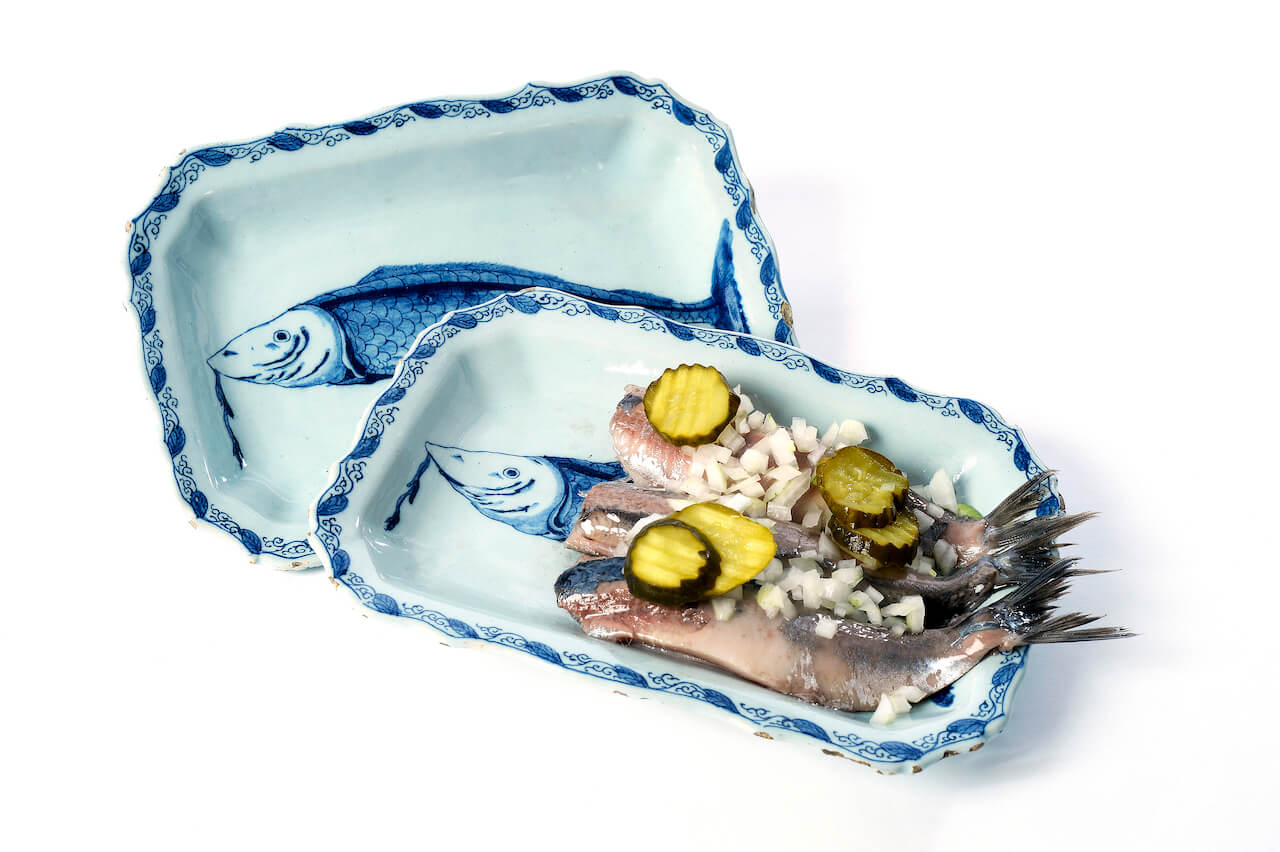
[popup_trigger id=”13756″ tag=”span”]![]() [/popup_trigger]
[/popup_trigger]
Images on this website are licensed under a
Creative Commons Attribution-NoDerivs 3.0 Unported License.
OBJECT
•D1973. Pair of Blue and White Rectangular Herring Dishes
Delft, circa 1770
Each marked in blue with an axe for De Porceleyne Byl (The Porcelain Axe) factory
Each painted in the center with a scaly herring within a border of leaves and scrolls on the scalloped and barbed edge of the chamfered rectangular rim.
Dimensions
Lengths: both 23.3 cm. (9.2 in.)
Note
The herring, also known as ‘silver of the sea’ provided an important source of income for the Dutch fishing trade. During the first decade of the seventeenth century alone, there were approximately 770 ships (buizen) within the herring fleets. Herring fish were nutritious, inexpensive and like cod, had an extended shelf life when they were preserved in a barrel of salt. Thus, the fish could be consumed all year-round. The best way to eat herring, according to the Dutch poet Jacob Westerbaen, was with onions, bread, butter and beer from Haarlem, Delft or Breda. Given the popularity of this Dutch delicacy, herring dishes became a very typical object of the Dutch kitchen in the seventeenth and eighteenth centuries. Various types of dishes especially conceived for its tasting were produced. They were sometimes modeled as a fish, an oval, or a rectangular shape with the depiction of a herring in the center as in the present pair.
Similar examples
A single herring dish with similar border decoration and marked for De Porceleyne Byl is illustrated in Aronson 2007, p. 72, no. 54. Another similarly bordered De Porceleyne Byl herring dish is illustrated by Van Dam 2004, p. 185, fig. 133. A pair of examples by De Roos (The Rose) factory is illustrated by Van Aken-Fehmers 2001, p. 285, ill. 91; and one of those is illustrated by Jörg 1983, p. 164, ill. 119, along with its Chinese export porcelain counterpart, p. 84, ill. 39. On p. 88, the author dates the object circa 1775 based on records of herring dishes imported by the Dutch East India Company (VOC) at 42 cents apiece with one herring, or 52 cents apiece if painted with two herrings.
AVAILABILITY
Sold








